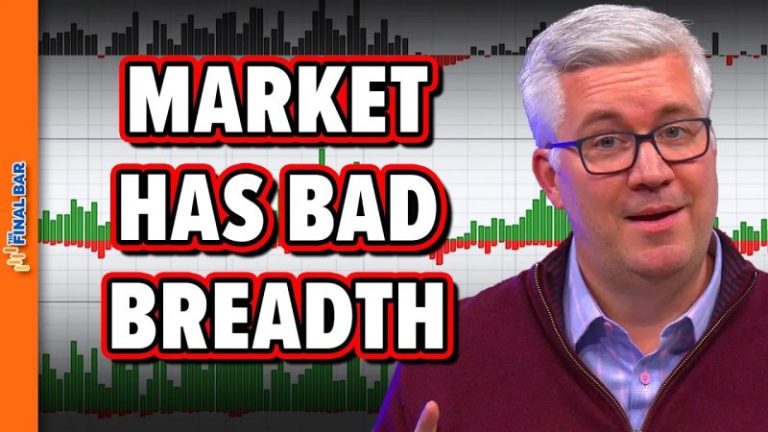In the world of investing, market breadth is a key indicator that many analysts use to gauge the health and direction of the overall market. Market breadth essentially refers to the number of individual stocks advancing compared to the number declining within a particular market index. A common measure of market breadth is the advance-decline line, which tracks the number of stocks rising versus those falling on a given trading day.
At first glance, poor market breadth can raise concerns among investors. When a market experiences poor breadth, it means that a limited number of stocks are driving the market higher while the majority are either flat or declining. This scenario can be seen as a potential warning sign, as it suggests that the overall market rally is being supported by only a handful of stocks rather than a broad base of companies.
One of the primary reasons investors should be wary of poor market breadth is the lack of market confirmation. In a healthy market, broad participation across various sectors and industries can provide confirmation that the rally is sustainable and not driven solely by a few high-flying stocks. When market breadth is poor, it can be an indication that the rally is isolated and not supported by a strong foundation of underlying strength in the market.
Moreover, poor market breadth can also lead to increased volatility and sharper market downturns. When market gains are concentrated in a few stocks or sectors, any negative news or significant price movements in these select companies can have a disproportionately large impact on the overall market. As a result, investors may experience heightened volatility and see more pronounced market declines when poor breadth is prevalent.
It is important for investors to closely monitor market breadth indicators to gain insights into the underlying strength of the market. By keeping an eye on breadth measures such as the advance-decline line, investors can assess whether the market rally is broad-based and sustainable or narrow and potentially fragile. While poor market breadth should not necessarily trigger panic selling, it serves as a valuable signal for investors to exercise caution and reevaluate their investment strategies.
In conclusion, poor market breadth is a warning sign that investors should be mindful of when navigating the financial markets. By understanding the implications of weak market breadth and its potential impact on market dynamics, investors can make informed decisions to protect their portfolios and mitigate risk during uncertain times.



